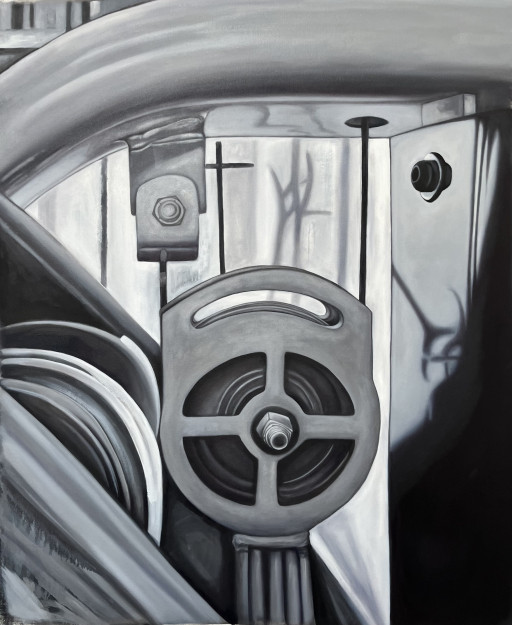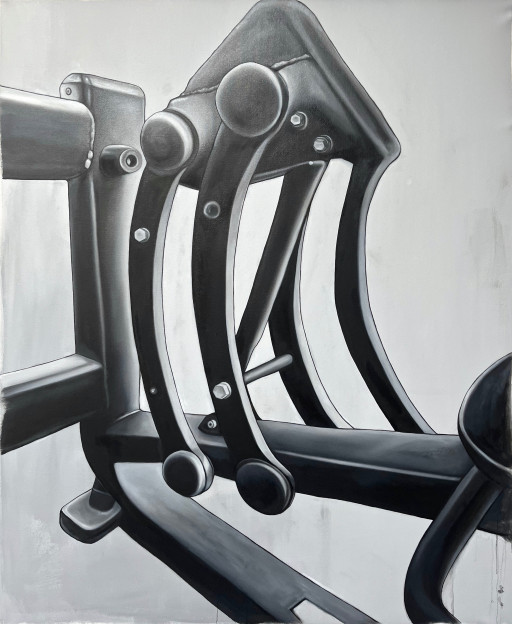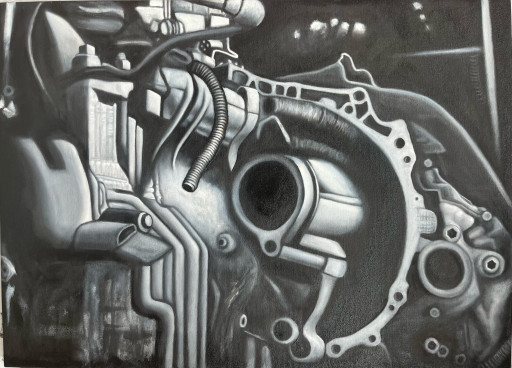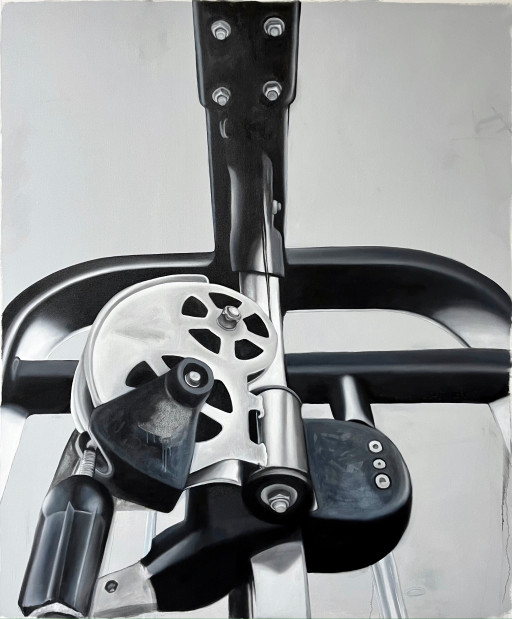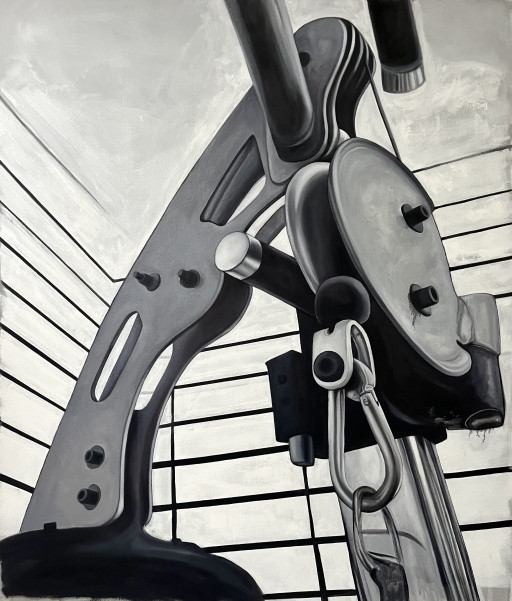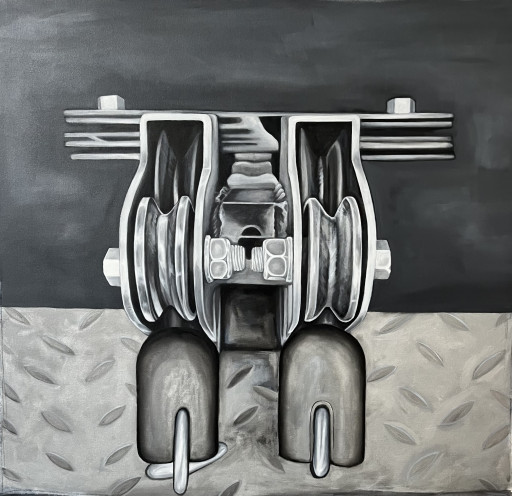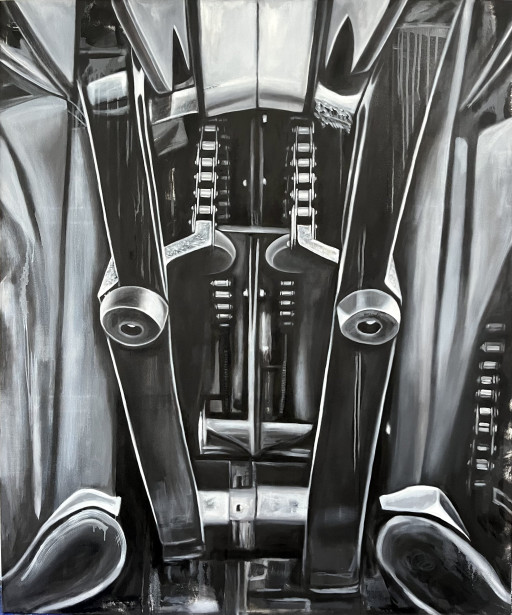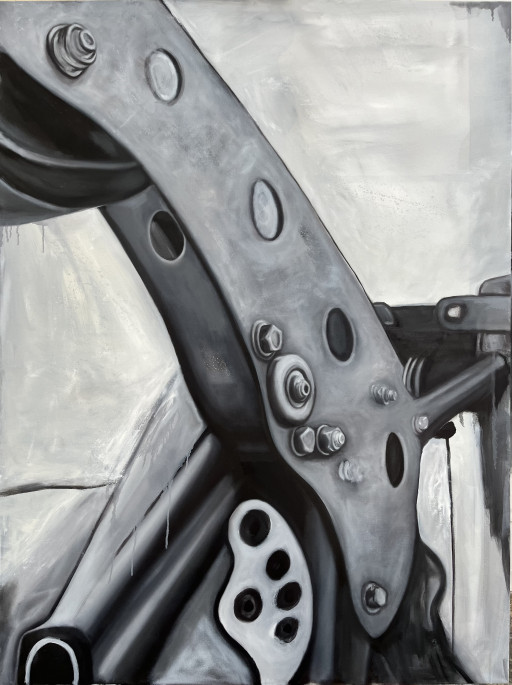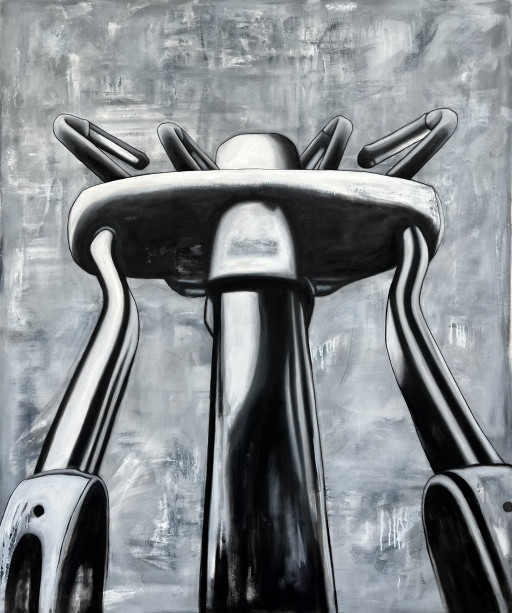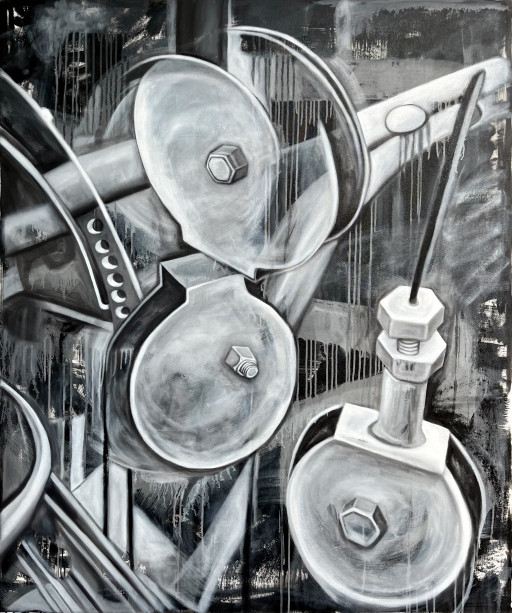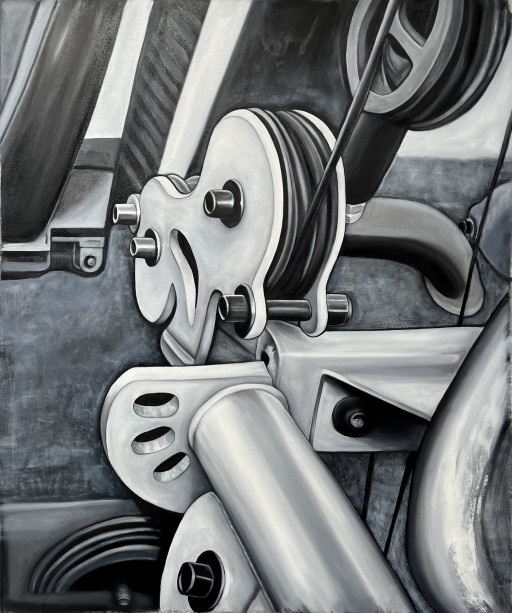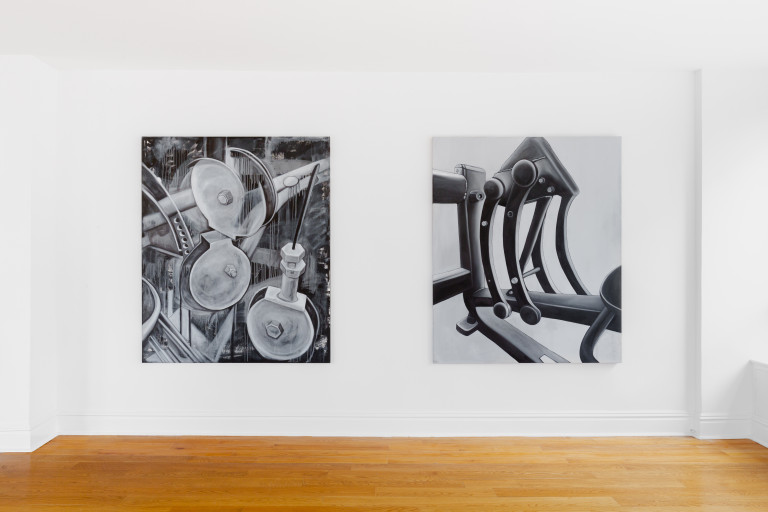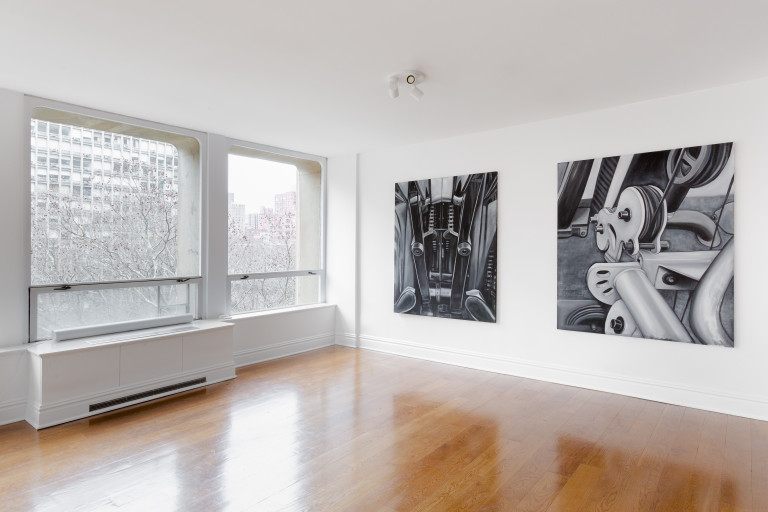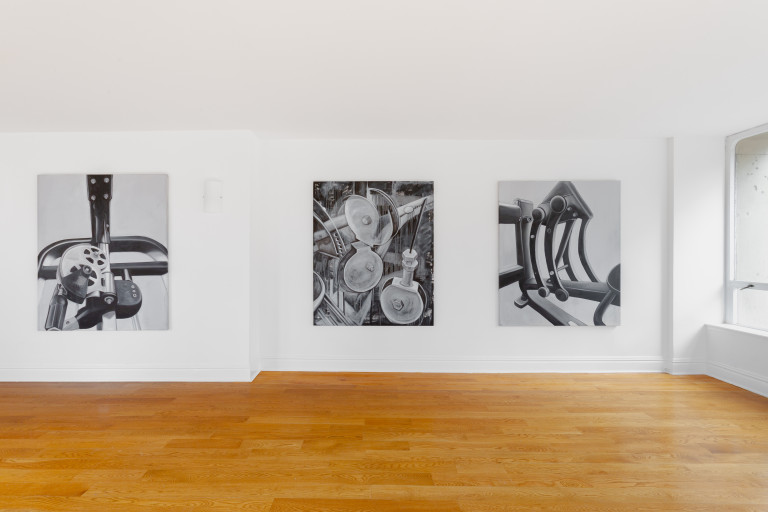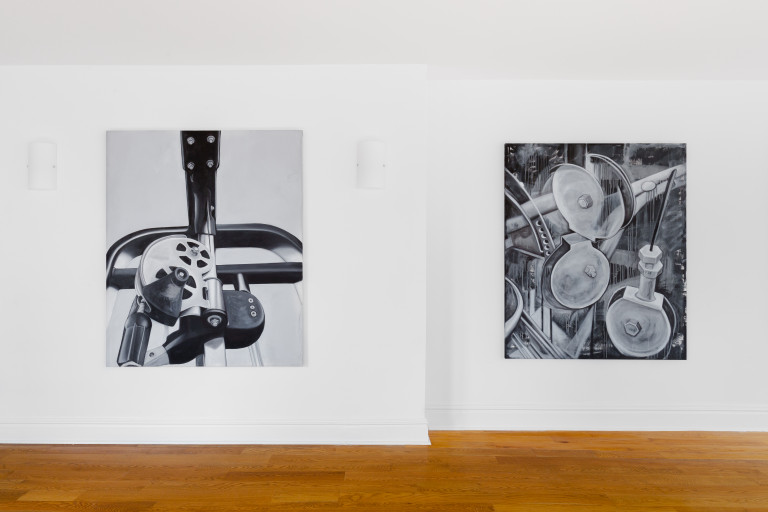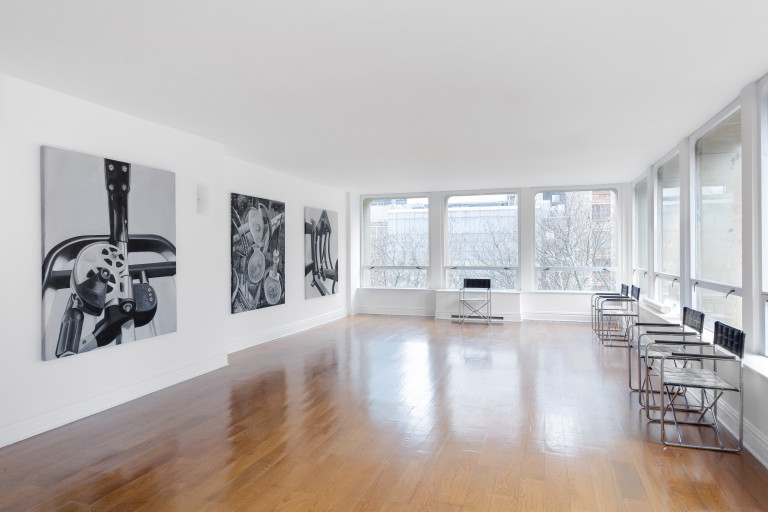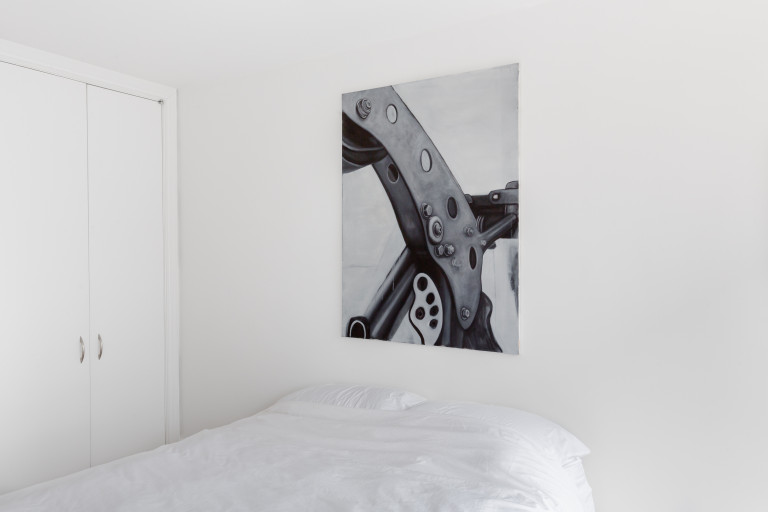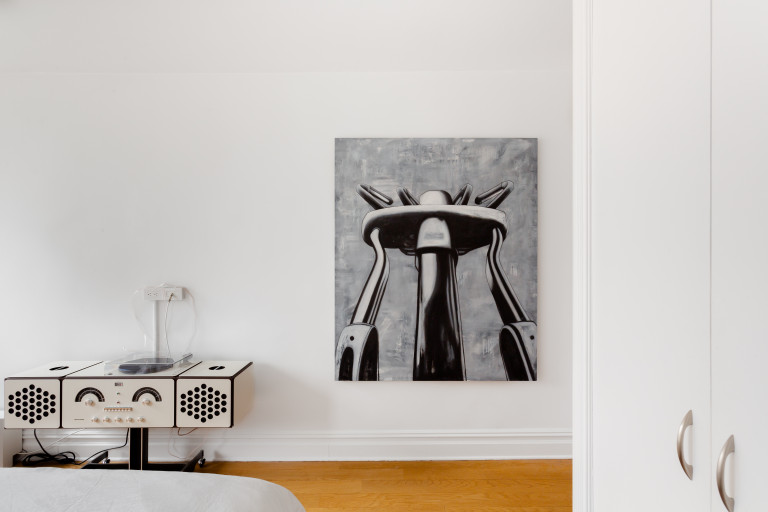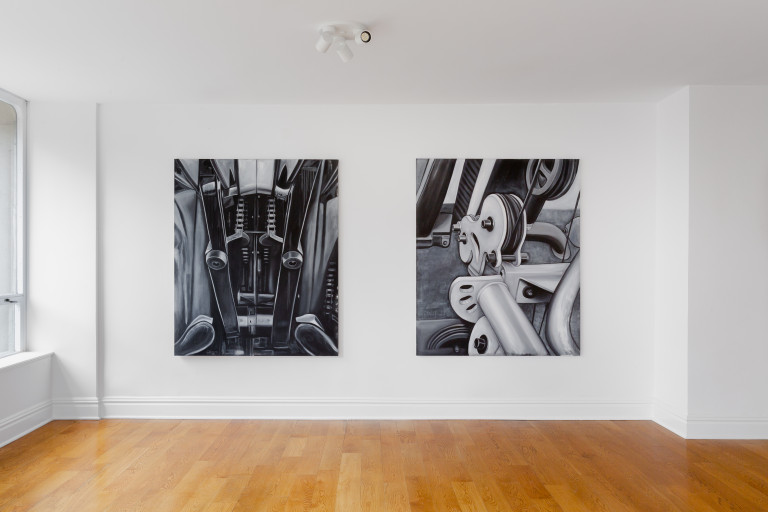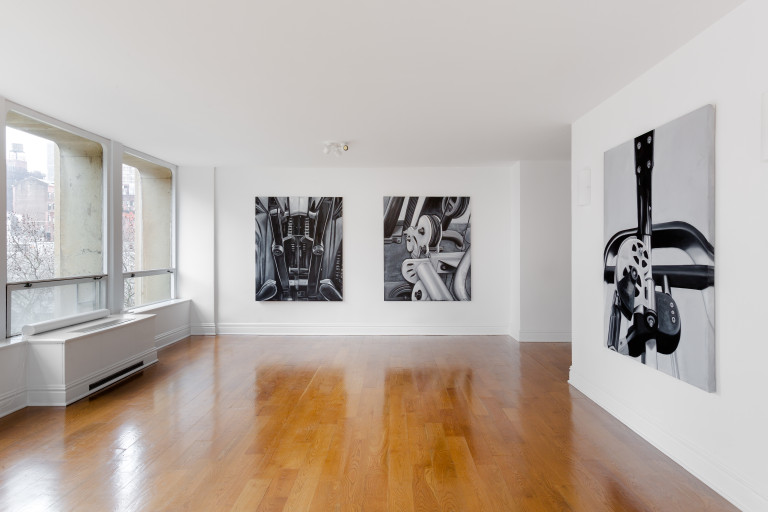Cold and unfeeling metallic parts belie the neurotic warmth of human aspiration in Marika Thunder’s closely-cropped portraits of exercise equipment. Meticulously designed machines, meant for repetitive motions while tethered in place, speak to illusions of progress and fantasies of productivity, oriented toward exhaustion. With curves, apertures, and protrusions snugly interlocking, the equipment’s rib-like rungs, arching spines, and mobile joints simulate as they support the human form. Drawing ever-closer parallels between bodies and machines made for working out bodies, the equipment's scale, conjoined components, and near-symmetry comes to an uncanny conclusion as each portrait is titled a human name.
Thunder’s work wields a discerning lexicon of painterly references to examine alienation and alliances between machines and mortals. Recontextualizing constructivist aesthetics within today’s culture of aspiration, the automatism of exercise equipment echoes the mechanical eroticism of Francis Picabia's machines. Visualizing technology’s relationship with animism, Thunder’s equipment equally resonates with Lee Lozano's cramped compositions of tools in motion, seemingly active on their own accord. Thunder employs a gray-scale, as explored by Gerhard Richter, to add a distance of removal, and neutralize her subject. By eliminating any color reflected in the metallic surfaces, a black and white palette intensifies focus on light, shadow, and the streamlined contours of each component, ultimately revealing textures that amass in an inherent bodily essence of the machinery.
When activated, the dual frames of human and machine align in concert. Bodies collaborate and reconcile their purpose with the steely equipment. As vessels for transformation, the iron parts ask what power looks like and the body responds by showing it. Propelled by a beating heart, muscle and metal synchronize rhythmic exchanges of pressure. The repetitive movement of flesh and machine are forced to correspond as triceps pump, ropes pull, abdomens flex, and wheels glide. Sweat beads condense, dripping into moving gears to become part of the machinery itself. The weight of resistant force bonds flesh and apparatus in an intimate dance of strength and strife.
Thunder's studies of objects designed to be in motion paradoxically exist in liminal chambers where time seems to stand still. In quelled color and surrounded by flattened existential space, the machines become distinctly defined by the deep space of their merging joints. Like a person, their flaws become endearing; gitty bubbles on a welded seam exposed, smudges on a glossy surface, or leaks from lubricated hinges. Offering a lyrical interpretation of (conspicuously non-digital) manual machinery, these closely observed machines capture how the synergy between human form and design can transcend the brute physical world.
Thunder’s most recent solo presentation took place at Nina Johnson Gallery, Miami (2023). She will have an upcoming exhibition with Reena Spaulings in Los Angeles in 2024. Thunder lives and works in New York.
In collaboration with HMW, Nice.
